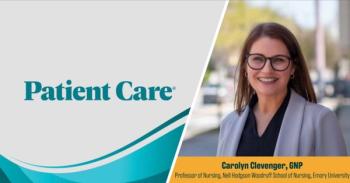
A Family Physician Explains Why Primary Care Can't Afford to Miss Signs of Suicide Risk
Teresa Lovins, MD, sees at least 1 or 2 patients a week who have suicidal ideation. Too many of them are at risk for an attempt within a month of those visits.
"In my own practice, I’d estimate at least 1 or 2 patients each week have some degree of suicide risk," family medicine specialist Teresa Lovins, MD, said in a recent interview with Patient Care. "We also know that many individuals who die by suicide have seen their primary care physician within the past several months," Lovins added.
Lovins' experience as a family practitioner and physician owner of Lovin My Health DPC, in Columbus, Indiana, echoes recent research that shows nearly 45% of individuals who die by suicide have visited a primary care provider within a month of their death.1 Separate research found that 80% of suicide victims had seen a primary care clinician within the year prior to their death, compared to 25% to 30% who had seen a mental health specialist.2,3
The more routine contact with a front-line clinician offers a critical opportunity for early intervention and prevention. Although routine mental health screening is not universally recommended, there are simple tools that can make the process simple when a clinician has reason to think a patient may be in distress.
In the short video above, Lovins talks more about her clinical and alludes to research to be discussed in the next episode of this video series.
The following transcript has been lightly edited for flow.
Patient Care: How often do family practitioners and other primary care clinicians encounter patients at risk for suicide in daily clinical practice?
Teresa Lovins, MD: I think we miss a lot of patients who may be at risk for suicide. What this study set out to do was show us better ways to identify those patients, and I think it was a very appropriate approach. In primary care, we use a number of screening tools to help flag patients who may be struggling, and in my own practice, I’d estimate at least 1 or 2 patients each week have some degree of suicide risk. We also know that many individuals who die by suicide have seen their primary care physician within the past several months. That tells us the problem is far more widespread than what we’re recognizing or addressing. So, having research that validates effective screening methods is an important first step in finding these patients and making sure they get the help they need.”
If you or someone you know is struggling with mental health, please reach out for help. There are many resources available to provide support and guidance. National Hotlines: 988 Suicide and Crisis Lifeline: A 24/7 hotline for immediate support; NAMI HelpLine:1-800-950-NAMI (6264); Crisis Text Line: Text HOME to 74174
References
Stene-Larsen K, Reneflot A. Contact with primary and mental health care prior to suicide: A systematic review of the literature from 2000 to 2017. Scand J Public Health. 2019;47(1):9-17. doi: 10.1177/1403494817746274
Walby FA, Myhre MØ, Kildahl AT. Contact with mental health services prior to suicide. a systematic review and meta-analysis. Psychiatr Serv. 2018;69(7):751-759. doi: 10.1176/appi.ps.201700475
Harmer B, Rizvi A, Saadabadi. Suicidal ideation. StatPearls [internet]. National Center for Biotechnology Information. Updated April 20, 2024. Accessed August 29, 2025. https://www.ncbi.nlm.nih.gov/books/NBK565877/
Newsletter
Enhance your clinical practice with the Patient Care newsletter, offering the latest evidence-based guidelines, diagnostic insights, and treatment strategies for primary care physicians.


















































































































































































































































































